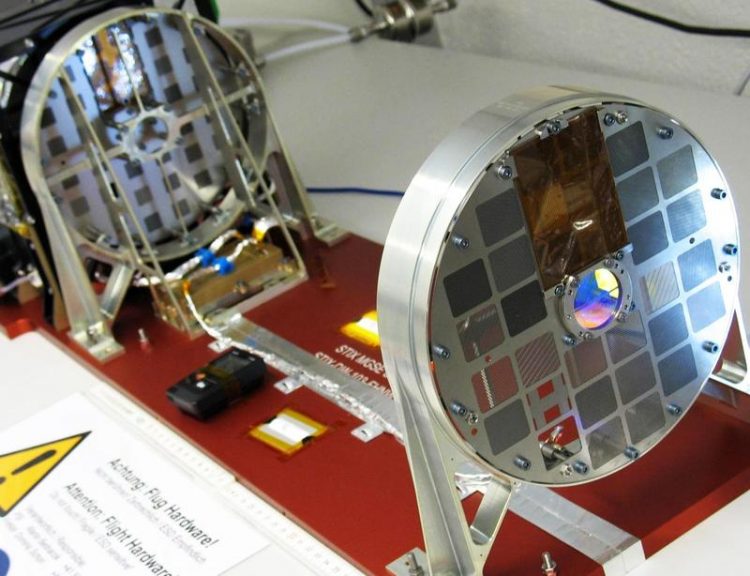X -Ray Telescope STIX Ready for Launch to the Sun

The imager of the telescope STIX and the detector box (black, in background). Quelle: AIP/Hakan Önel
STIX (short for Spectrometer/Telescope for Imaging X-rays) is designed to measure X-ray radiation emitted from the hot corona, the outer solar atmosphere. X-ray radiation as an indicator for magnetic solar activity.
STIX consists of windows in the heat shield, the imager and the detector box. X-ray radiation passes through the windows in the heat shield, it is subsequently filtered by the imager unit and finally detected by the detector box – in order to obtain images of the hottest regions of solar eruptions with temperatures of up to 40 million degrees Celsius.
AIP developed the fundamental imager design, machined actual flight parts, and supported the assembly and integration of the instrument. Furthermore, AIP accompanied the test campaign aimed to verify that the instrument can withstand strong vibration levels and large temperature fluctuations. It took about eight years to complete the STIX imager.
The German Space Agency (Deutsches Zentrum für Luft- und Raumfahrt, DLR) funded AIP with 1.8 million Euros for this project. Now, the international instrument team led by the Fachhochschule Nordwestschweiz (FHNW) has delivered STIX to Airbus Defence and Space (UK), where all instruments will be integrated into the Solar Orbiter spacecraft. Solar Orbiter is equipped with ten instruments to investigate the Sun and its environment.
Scientists hope to find answers to some of the Sun’s yet unanswered questions with STIX data. They will study how solar flares are generated and how they affect the interplanetary space, the Earth’s environment and our technical civilisation.
During Solar Orbiter’s ten year mission it will closely approach the Sun to about one quarter of the distance between Sun and Earth. It will even leave the ecliptic plane allowing for observations of the solar poles. Solar Orbiter will collect unprecedented data from perspectives never seen before.
STIX website:
http://www.aip.de/en/research/research-area-cmf/cosmic-magnetic-fields/solar-phy…
Science contacts:
apl. Prof. Dr. Gottfried Mann (Projektleiter), +49 331-7499 292, gmann@aip.de
Dr. Hakan Önel, +49 331-7499 261, honel@aip.de
Media contact:
Katrin Albaum, +49 331-7499 803, presse@aip.de
https://www.aip.de/en/news/science/ready-for-launch-to-the-sun
Media Contact
All latest news from the category: Physics and Astronomy
This area deals with the fundamental laws and building blocks of nature and how they interact, the properties and the behavior of matter, and research into space and time and their structures.
innovations-report provides in-depth reports and articles on subjects such as astrophysics, laser technologies, nuclear, quantum, particle and solid-state physics, nanotechnologies, planetary research and findings (Mars, Venus) and developments related to the Hubble Telescope.
Newest articles

Combatting disruptive ‘noise’ in quantum communication
In a significant milestone for quantum communication technology, an experiment has demonstrated how networks can be leveraged to combat disruptive ‘noise’ in quantum communications. The international effort led by researchers…

Stretchable quantum dot display
Intrinsically stretchable quantum dot-based light-emitting diodes achieved record-breaking performance. A team of South Korean scientists led by Professor KIM Dae-Hyeong of the Center for Nanoparticle Research within the Institute for…

Internet can achieve quantum speed with light saved as sound
Researchers at the University of Copenhagen’s Niels Bohr Institute have developed a new way to create quantum memory: A small drum can store data sent with light in its sonic…





















